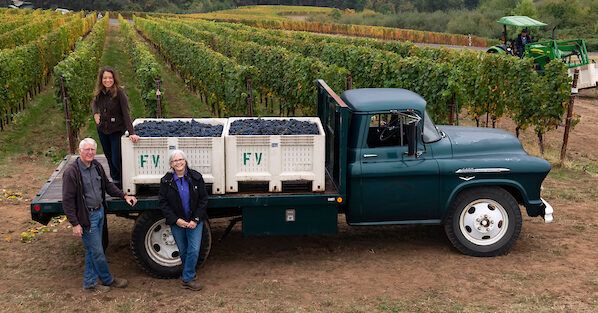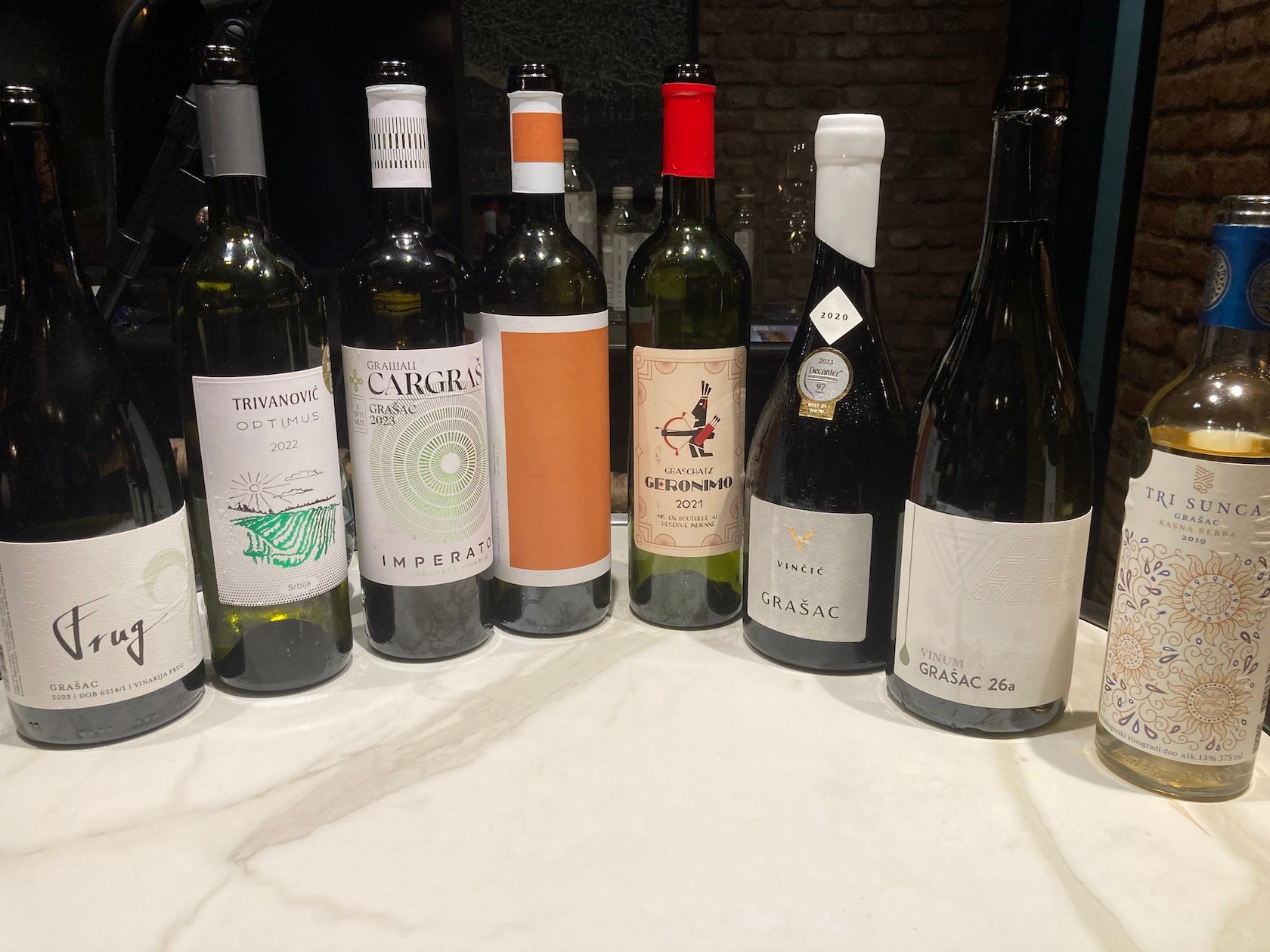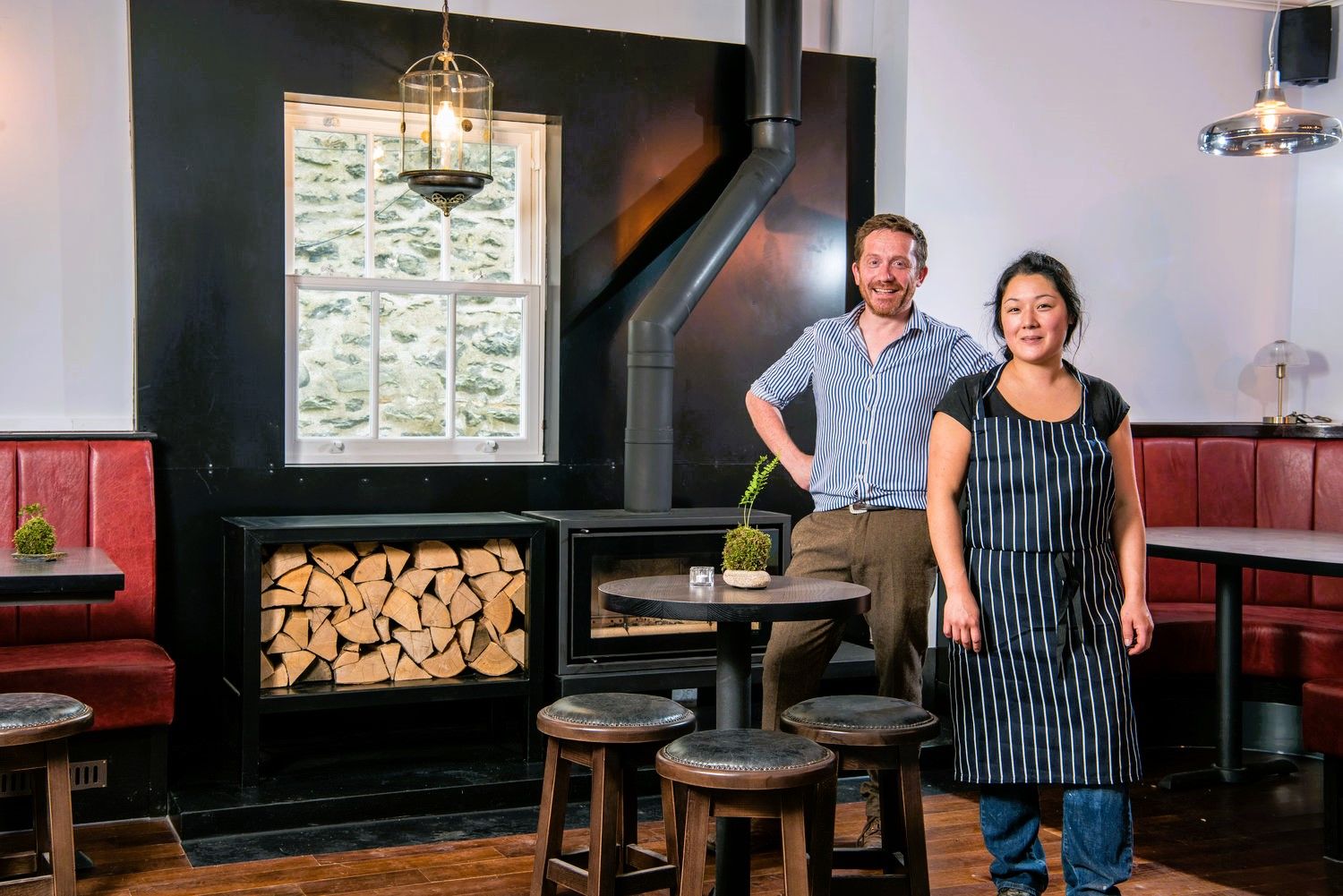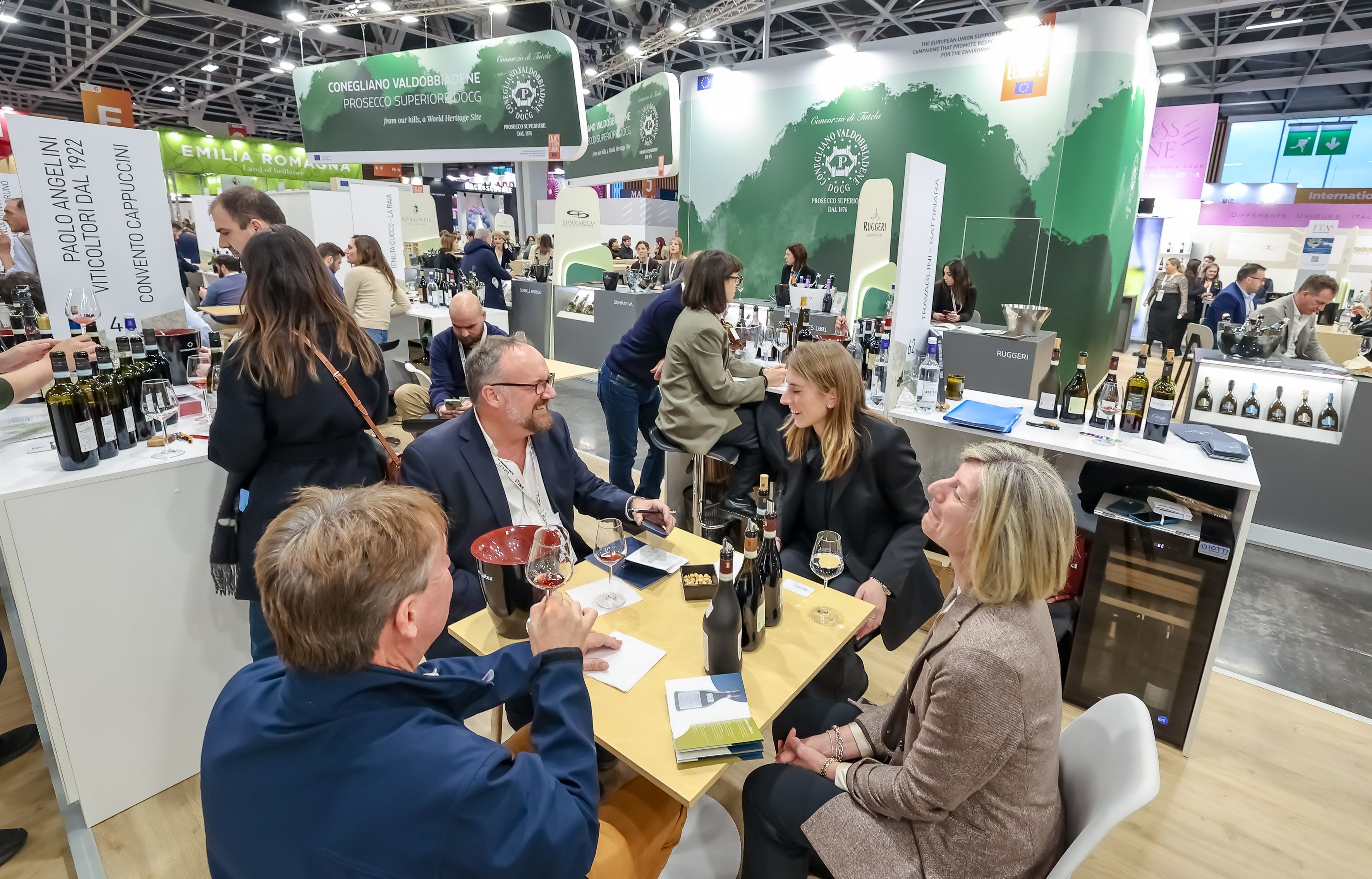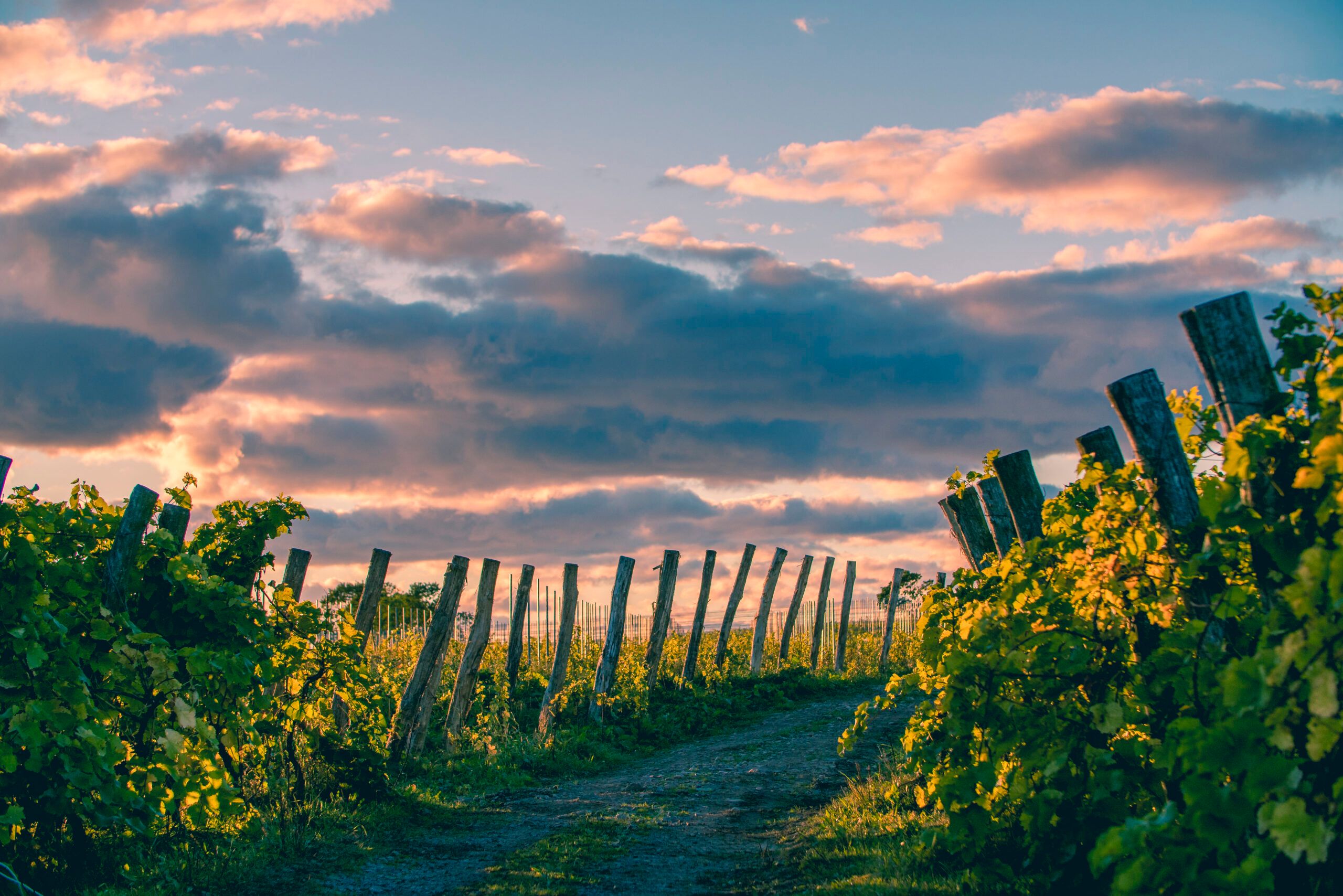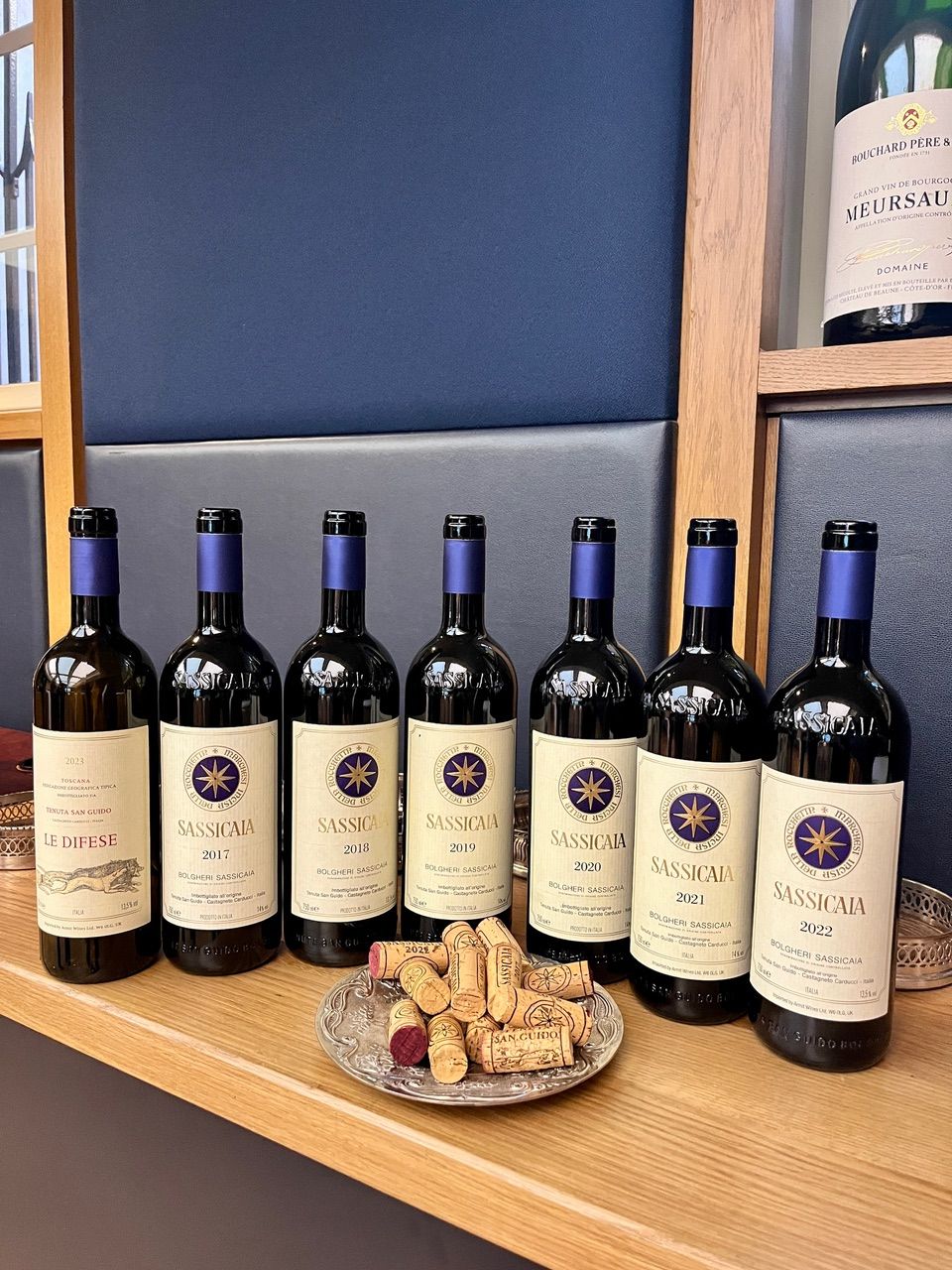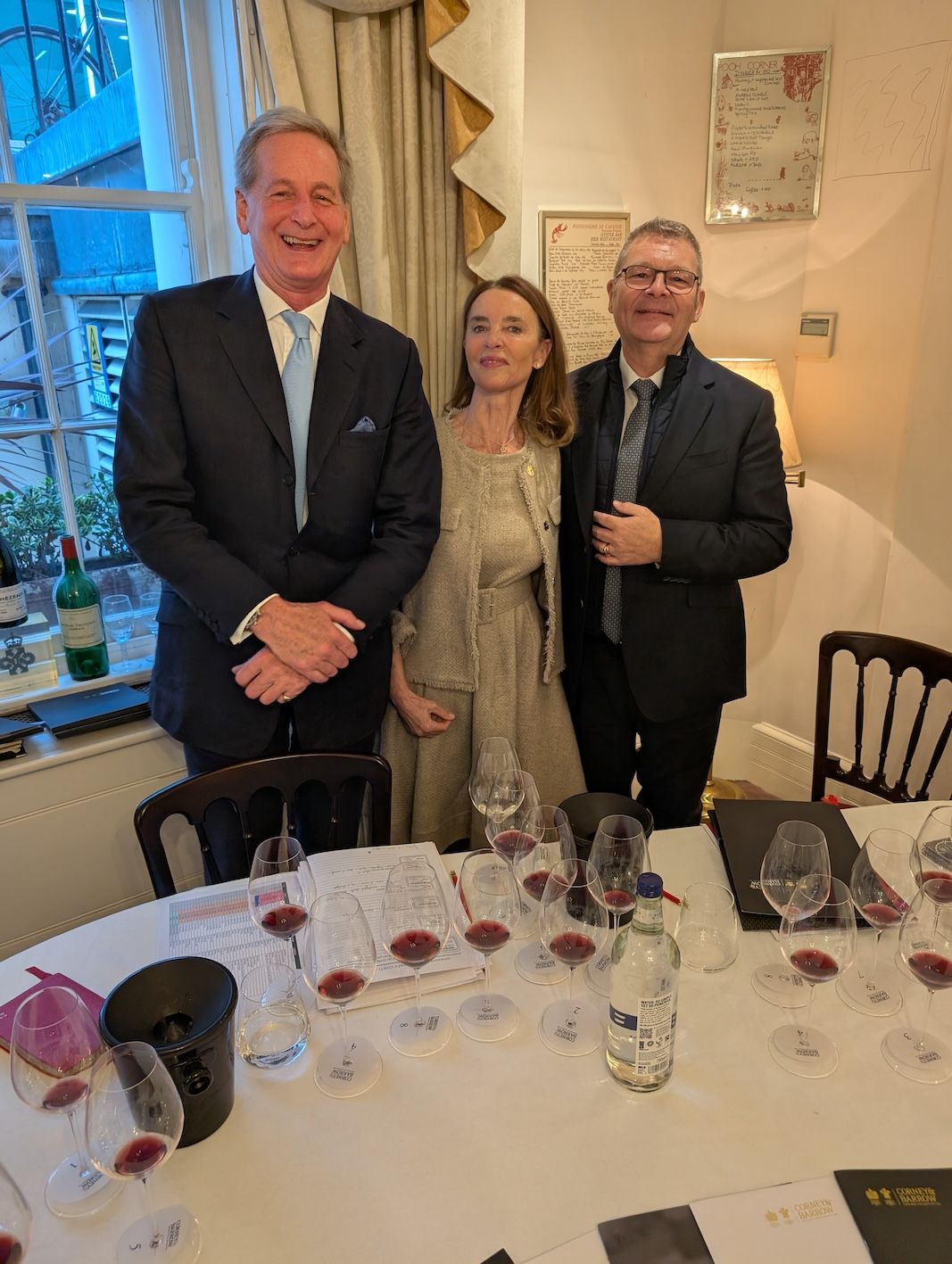“Whole cluster is something that’s become increasingly valuable, particularly in years that are warmer, because I find that I’m trying to preserve or capture more of the fruit that’s there,” says Tony Rynders.
Yamhill-Carlton AVA lies in the heart of Oregon’s Willamette Valley. Skirted by mountains on three sides, this horseshoe-shaped wine region enjoys moderate weather and some of the area’s oldest marine sedimentary soils.
Founded in 2004, the subregion mandates that vineyards fall within altitudes of 200 (60.96 metres) to 1000 feet (304.8 metres). Here, flagship variety Pinot Noir shares centre stage with supporting grapes Pinot Gris and Chardonnay.
Sustainability lies at the core of Yamhill-Carlton AVA, where many of the vineyards hold LIVE, Salmon-Safe, or Demeter Biodynamic® certifications. So does unpretentious cooperation among winemakers, inspiring the region’s motto, “Down to Earth.” This much was evident during May’s Oregon Wine Month.

Seven wines from seven winemakers
It’s a tight-knit community, one that is comfortable sharing, collaborating, and learning together. Many are neighbours. This easy congeniality informed the tastings, which better resembled jazz musicians riffing than winemakers talking.
The cross-section of vineyard sourcing offered a glimpse into regional diversity. Furthest north, Adam Campbell’s pioneering parents established Elk Cove Vineyards in 1974. There, they planted La Bohème in 1985, and Mt. Richmond in 1996. At 800 feet (243.84 m.), La Bohème constitutes one of Willamette Valley’s highest vineyards.
Moving south, Et Fille Winery’s Jessica Moseico sources from LIVE Certified Fairsing Vineyard, an exposed, convex vineyard planted by owners Mike & Maryann McNally in 2006. “Et Fille” means “and daughter” in French. Former biotech marketer Jessica Mozeico and her software engineer father Howard founded Et Fille Winery in 2003. Howard passed away in 2017, and she continues his legacy.
Renowned winemaker Tony Rynders of Tendril Wines pulled fruit from two vineyards for his 2015 Tightrope – Mt. Richmond, and dry-farmed Saffron Fields Vineyard, where he’s also consulting winemaker. “For Tightrope, I wanted to capture a wide range of flavours and textures that Pinot Noir can express here in the Willamette Valley.”
Hugging the easternmost boundary, Lynn Penner Ash, one of Oregon’s first female winemakers, and husband Ron founded Penner-Ash Wine Cellars in 1998. Her Live & Salmon Safe Certified estate contains some of the most diverse soil types in the area.
Near Penner-Ash, the legendary Ken Wright purchased Savoya Vineyard in 1998, planting it between 1999-2003. “Savoya” means onion in Spanish, so named for the vineyard’s distinct sweet onion aromas.
New York native-turned-California transplant Brian McDonnell and his wife purchased a 70-acre (28.33 ha.) property east of Carlton in 1992. There, he planted Belle Pente in 1994, harvesting his first vintage in 1996. Pandemic year 2020 marked his winery’s 25th anniversary.
Finally, winemaker Jay McDonald of EIEIO Wines sourced from neighbour Yates Conwill Vineyard, also near Carlton. Large oak trees shade a portion of the site, while elevations range between 300-500 ft. (91.44-152.4 m.) “So you have the nice brightness and acidity from the Wädenswil, the shaded part,” he explained. “Then the Pommard was exposed, but high to low elevation, adds interesting characteristics.”
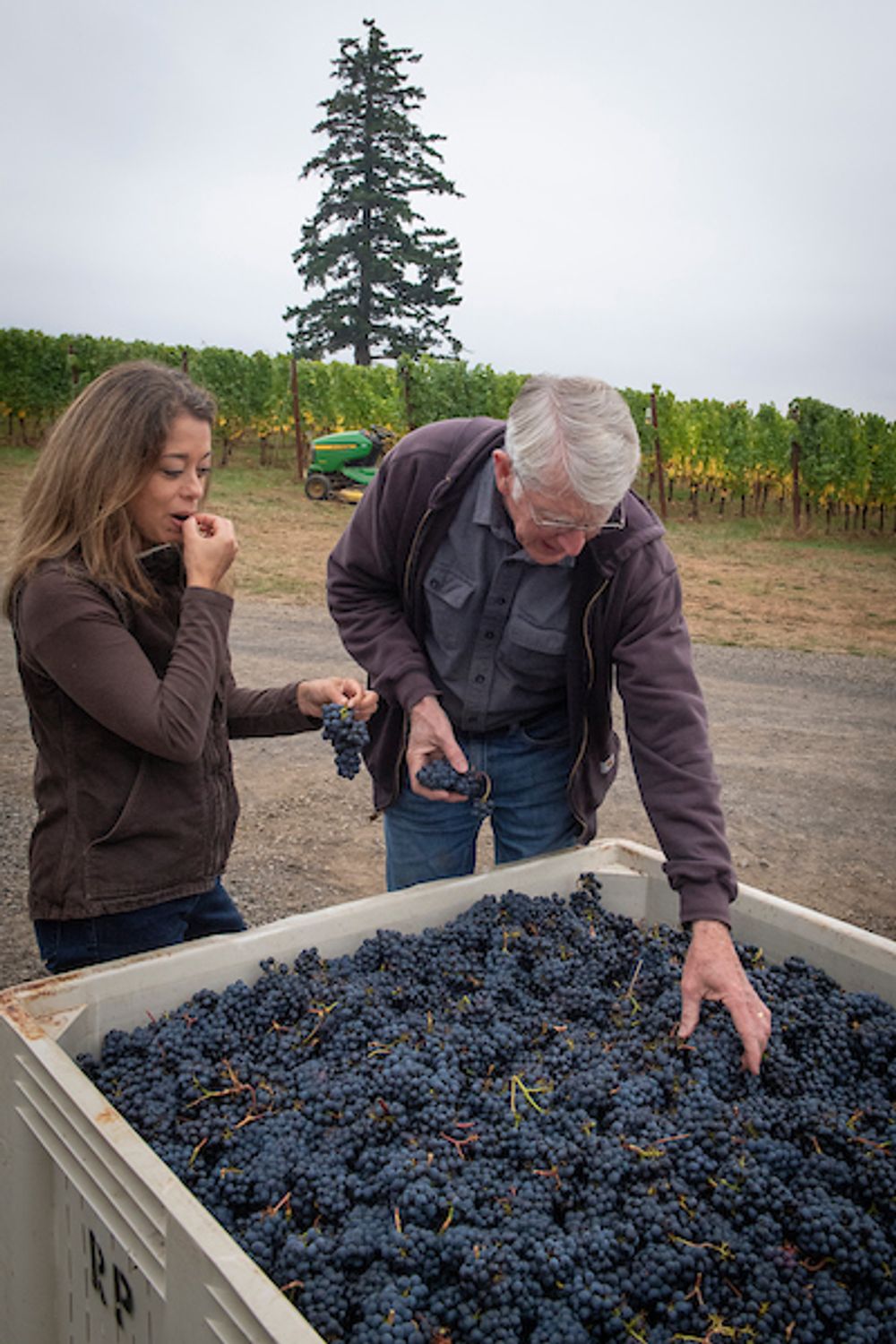
Jessica Mozeico of Et Fille Wines with Mike McNally of Fairsing Vineyard sampling Pinot Noir harvest 2018
Three vintages: two hot, one not
Vintage variations between 2014, 2015 and 2018 speak to a region in flux. While 2018 ranks as nearly perfect for winemakers in terms of growing and harvest conditions, 2014 and 2015 skewed warm. “The last ten vintages have been very interesting,” said O’Donnell, including five consecutive hot vintages commencing in 2014. “In 2015, we learned some things from the 2014 vintage.”
Jessica Mozeico of Et Fille Wine concurred. “Arguably, the warmest vintage that we’ve had on record – 2014 and 2015 – are kind of neck and neck there,” she says. The 2014 vintage proved warm throughout, offering little rain, robust fruit set, and relatively early harvests.
Diurnal shifts mark a key difference between 2014 and 2015 vintages. “In 2014, we didn’t have big swings. It would be 95°F during the day, and 65°F at night,” said O’Donnell. “In 2015, we had 105°F during the day, and 55°F at night.”
As a result, he shifted canopy management techniques, opting for less external leaf-pulling and opposite-row shading and hedging to provide shade, and more internal leaf-pulling to encourage airflow.
Whole cluster emerged a favoured strategy for mitigating the impacts of warm vintages.“In warm vintages, we don’t have to worry so much about microbial activity. What I do worry about is acidity, and I worry about tannin,” said Mozeico. “And so that will frame the strategic choices that we make in a warm vintage.” Her choices included more whole cluster and spontaneous fermentation experimentation.
“Whole cluster is something that’s become increasingly valuable, particularly in years that are warmer, because I find that I’m trying to preserve or capture more of the fruit that’s there,” added Rynders. “I’m fascinated by it, because it’s non-linear how it impacts wine.” It also slows fermentations, and better retains acids.
“To me, 2015 was really a watershed year for the Willamette Valley, because it was one of the hottest years on record,” McDonnell observed. “But the wines all have balance, elegance, tannins, acid, fruit – they’re pretty compelling Pinot Noirs. Just by making small modifications in what we do, we can make elegant, balanced Pinot Noirs in the Willamette Valley, even in these super-hot years.”
Ultimately, adaptability proves key to addressing vintage variations. “I think that the most critical skill we can embrace is the skill of adaptation,” Rynders concluded. “I haven’t seen a single vintage since I’ve been here in the Willamette that resembles completely a previous vintage. They’re all different. Every one of them.”
So how were the seven wines tasting?
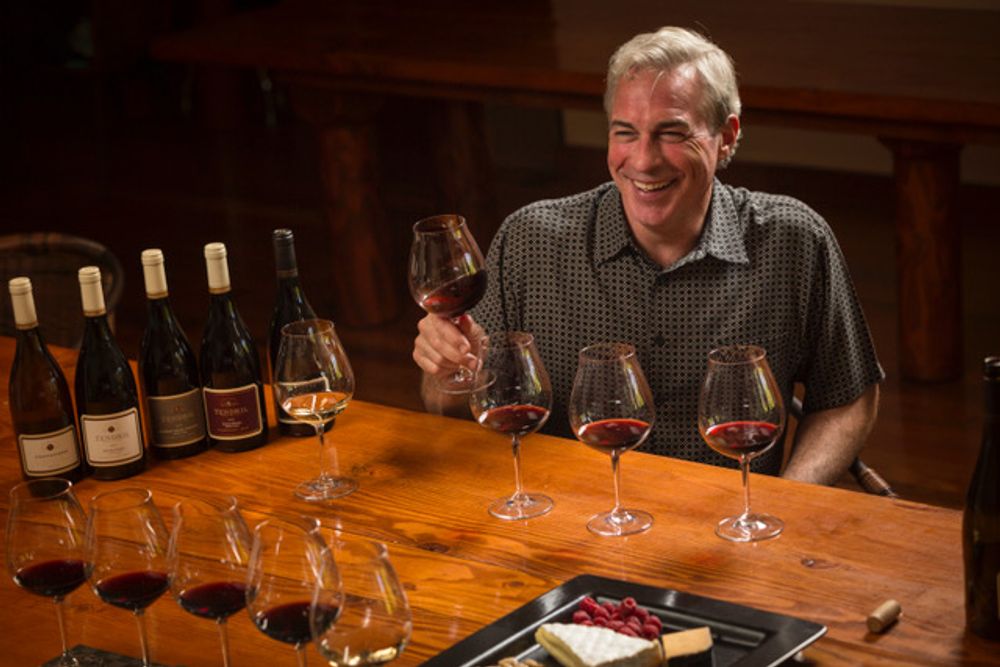
Tony Rynders of Tendril Wines
Elk Cove Vineyards 2018 La Bohème Pinot Noir | RRP $60 – 705 cases
100% Pommard. Aged 10 months in 26% new French oak. Planted in a former plum orchard, this deep ruby-hued wine hints at its heritage with notes of Italian plum and dark fruit, plus plenty of refreshing acidity.
Penner-Ash Wine Cellars 2018 Estate Pinot Noir | RRP $75 – 1,240 cases
Clones 114, 1145, 667, 777, Pommard. Aged 10 months in 31% new French oak. Dark ruby robe, light body, seamless structure. An infusion of floral and violet notes meld effortlessly into savoury, dark red fruit and black tea on the finish.
Ken Wright Cellars 2018 Savoya Vineyard Pinot Noir | RRP $63
Clones: 115, 667, 777, Pommard, Wädenswil. Deep plum robe with rose rim. A brooding blend of dark fruit, white pepper, and rose hip on the nose. On the palate, layers of dark cherry, blackberry, raspberry, and cassis fade to a lengthy finish. Surprisingly light body, masterful structure, age-worthy tannins.
Et Fille 2014 Fairsing Vineyard Pinot Noir | RRP $48 – 101 cases
100% Wädenswil. Aged 11 months in 25% new French oak. Deep ruby robe. Appealing morelo cherry, marsh rose, dark berry nose carries through on the palate. Light body, silky tannins, graceful balance.
Belle Pente 2015 Estate Reserve Pinot Noir | RRP $50 – 546 cases
42% Wädenswil, 23% Dijon 777, 17% Dijon 115, 10% Dijon 114, 8% Pommard. Aged 18 months in 50% new French oak. Deep garnet robe. Exotic aromas of savoury dark red and blackberry, cinnamon, and sandalwood. Rich, satisfying dark fruit and sous bois notes linger on the finish.
EIEIO 2015 Yates Conwill Pinot Noir | SRP $75 – 103 cases
50% Pommard whole cluster, 50% Wädenswil destemmed. Aged 11 months in 25% new French oak. This bright, ruby-robed Pinot Noir dazzles with lithe body, exquisite tannins, and deft balance. Ethereal notes of floral, forest floor and dark red fruit carry through to a silky finish. Sublime.
Tendril Wine Cellars 2015 Tightrope Pinot Noir | SRP $70 – 145 cases
40% whole cluster. Clones 115, 777. 18 months in 66% new French oak. Deep ruby robe. Complex, textured, medium-bodied. Aromas of evergreen, currant, plum, and dark cherry shapeshift into spice, dark blue and red fruit on the palate, with a prolonged raspberry and dark cherry finish. The name “Tight Rope” nods to Rynders’ quest for a sense of balance. This wine hits the mark.
